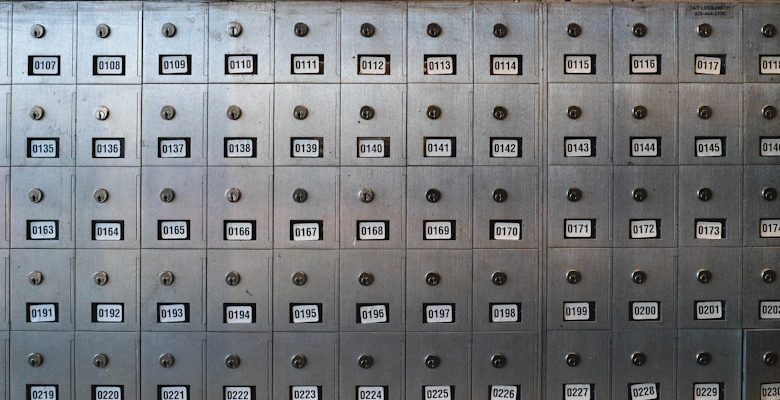The Basics of Crypto Wallets: Hot vs Cold Storage Explained

- Understanding the Difference Between Hot and Cold Storage for Crypto Wallets
- Advantages and Disadvantages of Hot Wallets for Storing Cryptocurrency
- The Importance of Security in Choosing Between Hot and Cold Storage Options
- How to Set Up and Use a Hot Wallet for Easy Access to Your Cryptocurrency
- Benefits of Cold Storage for Long-Term Security of Your Digital Assets
- Best Practices for Safely Storing Your Crypto Assets in Hot and Cold Wallets
Understanding the Difference Between Hot and Cold Storage for Crypto Wallets
When it comes to crypto wallets, one of the key distinctions to understand is the difference between hot and cold storage. Hot storage refers to wallets that are connected to the internet, making them more vulnerable to hacking and theft. On the other hand, cold storage involves keeping your cryptocurrency offline, typically on a hardware device or even on paper, providing an extra layer of security.
Hot wallets are convenient for frequent trading and transactions, as they allow for quick access to your funds. However, they are more susceptible to cyber attacks, malware, and other online threats. Cold storage, on the other hand, is ideal for long-term holding and storing large amounts of cryptocurrency securely.
It’s important to note that both hot and cold storage have their pros and cons, and the best option for you will depend on your specific needs and preferences. Some crypto investors choose to use a combination of both hot and cold wallets to balance convenience and security.
Advantages and Disadvantages of Hot Wallets for Storing Cryptocurrency
Hot wallets are digital wallets that are connected to the internet, providing quick and convenient access to your cryptocurrency. One of the main advantages of hot wallets is their accessibility – you can easily transfer and manage your funds anytime, anywhere. This makes them ideal for frequent trading or transactions.
However, this convenience comes with a trade-off in terms of security. Hot wallets are more vulnerable to hacking and cyber attacks compared to cold wallets, which are offline and therefore less exposed to online threats. In the event of a security breach, there is a risk of losing all your funds stored in a hot wallet.
It is essential to weigh the pros and cons of hot wallets carefully before deciding to use one for storing your cryptocurrency. While they offer convenience and accessibility, security risks should not be overlooked. It is recommended to only keep a small amount of cryptocurrency in a hot wallet for everyday use, while storing the majority of your funds in a cold wallet for added security.
The Importance of Security in Choosing Between Hot and Cold Storage Options
When deciding between hot and cold storage options for your crypto wallets, security should be a top priority. The security of your digital assets is crucial in the world of cryptocurrency, where the risk of hacks and theft is ever-present.
Hot wallets are connected to the internet, making them more vulnerable to cyber attacks. On the other hand, cold wallets are offline and therefore less susceptible to hacking attempts.
It is essential to consider the level of security you need based on the amount of cryptocurrency you hold and how frequently you need to access it. For large sums of crypto that you plan to hold long-term, cold storage is the safer choice.
However, if you need to make frequent transactions or trades, a hot wallet may be more convenient despite the higher security risks. Ultimately, the decision between hot and cold storage should be based on your individual needs and risk tolerance.
Remember, the security of your crypto wallets is paramount in safeguarding your investments. Take the time to assess your options carefully and choose the storage solution that best aligns with your security requirements.
How to Set Up and Use a Hot Wallet for Easy Access to Your Cryptocurrency
To set up and use a hot wallet for easy access to your cryptocurrency, you will first need to choose a reputable hot wallet provider. Look for a wallet that offers user-friendly interface, strong security features, and support for a wide range of cryptocurrencies. Once you have selected a wallet provider, download the wallet application onto your device and follow the instructions to create an account.
After creating your account, you will be given a unique wallet address. This address is used to send and receive cryptocurrency. Be sure to keep your wallet address secure and only share it with trusted sources. To add funds to your hot wallet, you can purchase cryptocurrency from an exchange or transfer it from another wallet.
When using your hot wallet, be mindful of security measures to protect your funds. Enable two-factor authentication, use a strong password, and keep your device free from malware. It is also recommended to only store a small amount of cryptocurrency in your hot wallet for everyday use, and keep the majority of your funds in cold storage for added security.
Overall, setting up and using a hot wallet can provide convenient access to your cryptocurrency for daily transactions and trading. By following best practices for security and storage, you can enjoy the benefits of hot wallet accessibility while safeguarding your digital assets.
Benefits of Cold Storage for Long-Term Security of Your Digital Assets
When it comes to the long-term security of your digital assets, cold storage offers several benefits that can help protect your investments. Unlike hot storage, which is connected to the internet and therefore more vulnerable to cyber attacks, cold storage keeps your assets offline and out of reach of hackers.
One of the main advantages of cold storage is its enhanced security measures. By storing your assets offline in a hardware wallet or paper wallet, you can greatly reduce the risk of unauthorized access. This provides peace of mind knowing that your digital assets are safe from online threats.
In addition to security, cold storage also offers protection against hardware failures and malfunctions. Since your assets are stored offline, they are not at risk of being lost due to technical issues or system crashes. This ensures that your digital assets remain safe and accessible for the long term.
Best Practices for Safely Storing Your Crypto Assets in Hot and Cold Wallets
When it comes to safely storing your crypto assets, it is crucial to follow best practices in utilizing both hot and cold wallets. Hot wallets, which are connected to the internet, are convenient for frequent trading due to their accessibility. However, they are more vulnerable to hacking attacks. On the other hand, cold wallets, which are offline and therefore less susceptible to cyber theft, are ideal for long-term storage of large amounts of cryptocurrency.
For hot wallets, it is advisable to only keep a small portion of your funds for trading purposes. This minimizes the risk in case of a security breach. It is also recommended to enable two-factor authentication and regularly update your wallet software to protect against potential vulnerabilities. Additionally, consider using a reputable hot wallet provider with a history of security measures in place.
When it comes to cold wallets, prioritize physical security by storing them in a safe place, such as a safety deposit box or a home safe. Make sure to keep backups of your wallet’s private keys in multiple secure locations to prevent loss in case of damage or theft. Regularly check for updates on the wallet software and follow any recommended security protocols provided by the wallet manufacturer.
By following these best practices for storing your crypto assets in hot and cold wallets, you can ensure the security and longevity of your investments in the ever-evolving world of cryptocurrency.



